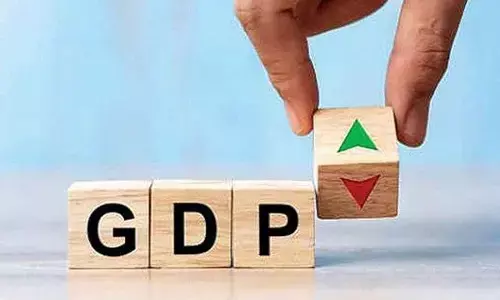After $5 trn m-cap, a $5 trn economy in sight

At 75, India is on the cusp of immense possibilities. It is no longer a sleeping giant as some depict it to be. There is a general consensus on this assertion. Economists in major countries are veering round to the view that India is on the rise and the rise is unstoppable. Lending credence to their bullish stand on India is Reserve Bank of India’s May 2024 Bulletin. Armed with data and opinions of its think tanks, the banker to the Central and the State governments and also the regulator of banking sector in the country thumped the table, strongly contending that the country is poised for a long-awaited economic take-off.
An article on ‘State of the Economy’ by an expert panel headed by RBI Deputy Governor Michael Debabrata Patra reels out data to show that rural demand for fast-moving consumer goods (FMCG) has outpaced urban markets for the first time in at least two years. Rural distress has for long been the concern of economists amid a decelerating growth of agriculture, the main driving force of robust demand. Even as the agriculture push is dependent on various factors, benefits of private sector expansion are percolating into the country side. This kind of growth in FMCG volumes is a conundrum given that core inflation – inflation excluding food items and fuel – is on downward spiral. A low, stable and predictable inflation can facilitate better financial planning and budgeting by both people and businesses. Economy naturally benefits and jobs are an offshoot certainly. However, retail inflation ruled steady in February, at 5.09 per cent as against 5.10 per cent the previous month. Blame it on the persisting food inflation.
According to the Economic Activity Index (EAI), which tracks twenty-seven high-frequency indicators, GDP growth is poised for 7.5% growth in the first quarter. IMF’s April 2024 World Economic Outlook (WEO) points to the robustness of India growth as reflecting a growing domestic demand and a rising working-age population. OECD also drew attention to the strong investment and improving business confidence in India. Consider any indicator, be it toll collections, automobile sales, FMCG growth, power consumption, renewable energy capacity creation, rapid growth of transport infrastructure, broadband connectivity, world’s highest number of digital transactions, a solidly built digital public infrastructure, capacity creation by manufacturers etc., they show Indian economy is more resilient than ever and on a steady ascent.
That there is real GDP growth is reflected in dramatic reduction in poverty. World Bank estimates extreme deprivation is on the decline The UN has also noted that 415 million people in India have come out of poverty between 2005 and 2021.
Inflationary pressures in many countries are weighing down on global financial stability. They trigger volatility in capital flows, making global investors risk-averse. India with a strong domestic demand provides a silver lining amidst gloomy global trends. Perhaps, this explains why the total market capitalisation of all stocks listed on the BSE surpassed $5 trillion briefly on Tuesday for the first time. India became the fifth country after the US, China, Japan, and Hong Kong to achieve this milestone.
Thus, there is more optimism about the growth of Indian economy. Further growth is definitely possible should the governments, Central and State, address water scarcity, low irrigation efficiency, residues of insecticides and pesticides in food items, quality education and skilling of youth, R&D, and, finally, affordable healthcare. There is a great potential for India to become a $5 trillion economy (from a little over $4 trillion now) in 2025.



















